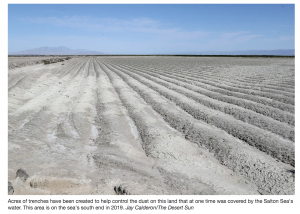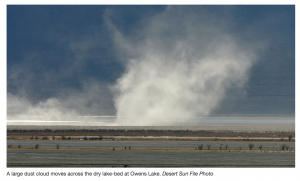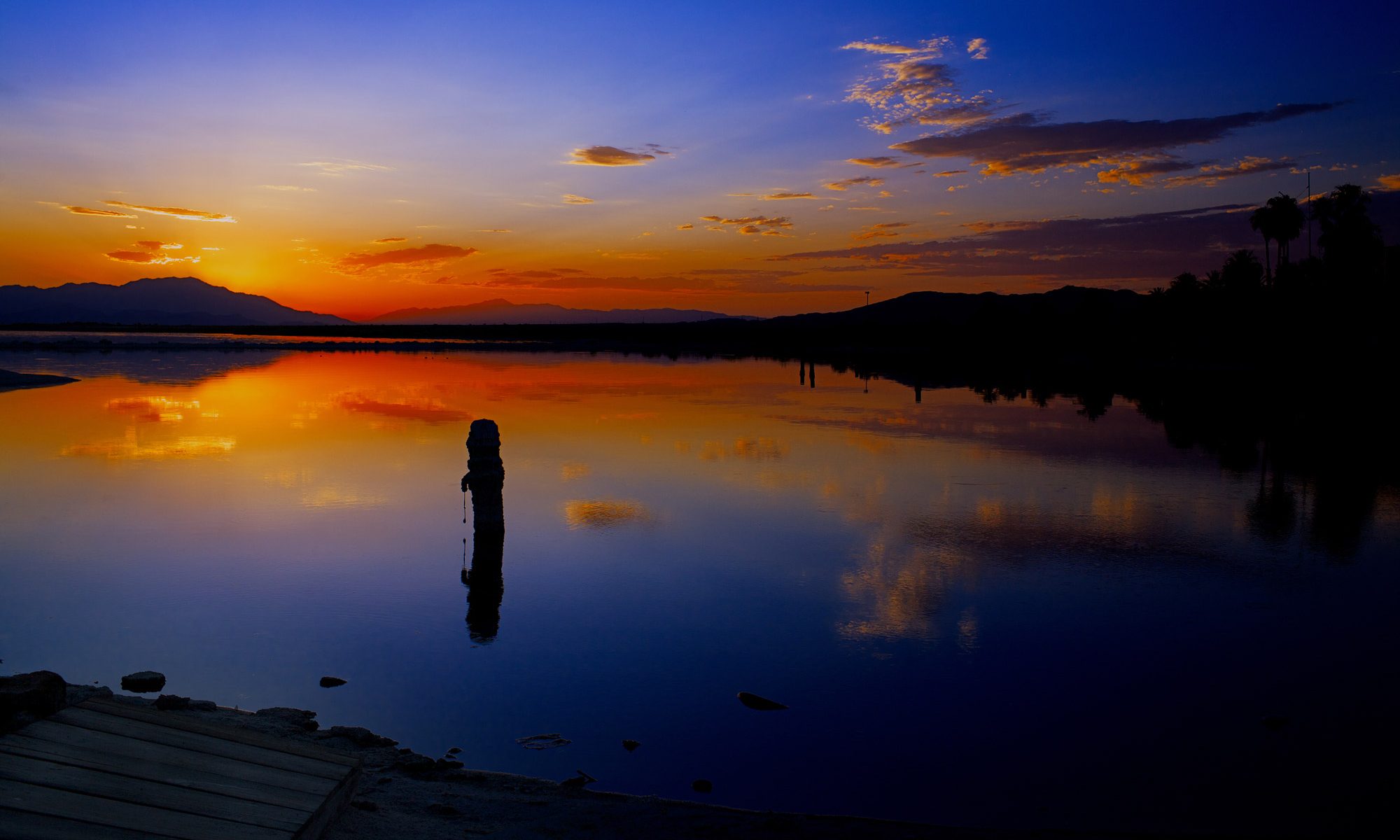
For various reasons, the Salton Sea is drying: rural-urban water transfers and sales, drought and manmade pollution. We have local water scarcity and poor-quality air. Due to urban population explosions, some of the Colorado River water that once went into the Salton Sea is now being sold to the Coachella Valley Water District, Los Angeles and San Diego. The Salton Sea is drying at a faster speed as temperatures rise and there is less water flowing into it. If we are to reverse the situation, this will demand decreasing water use and increasing the cost of water.
As the Salton Sea dries, air pollution rises as there is more dust, and it emits more stench in the form of hydrogen sulfide gas. Waste and chemicals coming from the Imperial Valley, together with Mexicali’s population explosion, are an overwhelming septic cargo for outdated infrastructure. Wastewater plants that have not been updated allow raw sewage and industrial chemicals to escape into the Alamo and New Rivers. These so-called rivers drain additional pollutants into the Salton Sea. Beneath the shrinking lake lie other pollutants: munitions from the World War II era, tons of pesticides, fertilizers and organic dead matter, which when exposed to the air release carbon dioxide and methane.

Owens Lake in Northern California became a disastrous dust bowl when the city of Los Angeles built a 200-mile aqueduct and completely drained the lake. This lifeless northern California site stretches for miles, with a patchwork of dust-control projects like furrowing, covering the lake bottom with gravel, plantings, and sprinkler systems costing $2.5 billion to install. There are millions more in maintenance costs every year.
Officials at the Salton Sea are following the Owens Lake path. Their ongoing practice of digging furrows and shallow ponds to control dust as more and more lakebed is exposed is questionable. Not only are these methods ineffective, they cause more greenhouse gas emissions! The Salton Sea is three times bigger than Owens Lake, so following that path could cost an estimated $7.5 billion.
Politicians and state officials who favor using the “incremental approach” with patronizing dry measures and shallow-water fixtures have succeeded in the serial killing of fish and other wildlife, and we are heading toward ever-more inhospitable conditions for humans. Importing ocean water would immediately address respiratory ailments, reverse the effects of drought and curb pollution. But the high cost is the main argument against water importation. In my view that expense is worth it. Yes, it will cost money to be a community that respects and takes care of our air, water, and soil.
Unlike Owens Lake, the Salton Sea has two oceans close by; there are 13 proposals to build an aqueduct to import water — either from the Sea of Cortez or the Pacific Ocean. Leaders of the Salton Sea Management Authority have considered these proposals too costly. However, a feasibility study is now being conducted by UC Santa Cruz to evaluate the effectiveness of these plans to import water. Their report will be turned over in September to the Salton Sea Management Program’s Long Range Planning Committee.
It is uncertain if water Importation will pass the feasibility test. If passed, how much longer will it take to start the engineering for an aqueduct?
The engineering of water importation should have started with the 2003 Quantification Settlement Agreement that legalized redirecting Colorado River water away from the Salton Sea. The QSA also called for restoring the largest lake in California, the Salton Sea. What are we waiting for?
